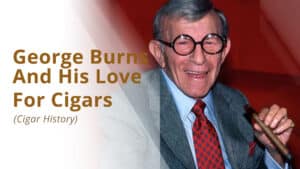Imagine holding a piece of history in your hand.
A story that begins over a thousand years ago with the ancient Mayans.
What if I told you the cigar you’re enjoying today is a distant cousin of a mystical Mayan creation?
Let’s embark on a time-traveling adventure back to Central America, where the Mayans, possibly in Guatemala or the Mexican Yucatan, crafted the first ever cigar.
#1 The Invention
Ancient pottery showcasing images of tobacco rolled in corn husks or leaves, a precursor to what we now cherish as a premium cigar.
But wait, this wasn’t your average tobacco.
We’re talking about a blend so potent it was said to induce hallucinations. Yes, the Mayans even made tobacco-infused beverages.
As the Mayans migrated across continents, did they bring these rustic cigars with them?
While that remains a mystery, what we do know is that tobacco use independently blossomed in places like Hispaniola and Cuba.
#2 The Discovery
Let’s turn back the clock to 1492, a pivotal year in our cigar story.
Christopher Columbus landed in Cuba and encountered the Taino natives, who were already enjoying their version of cigars wrapped in palm or plantain leaves.
This encounter marks the moment cigars began their global journey.
Columbus’s return to Europe with tobacco sparked a continent-wide sensation.
Spain, recognizing the potential, quickly set up cigar factories in Cuba, refining the process and skyrocketing the crop’s value.
Soon, tobacco smoking spread like wildfire across Europe, thanks to influencers like Jean Nicot, the French ambassador to Portugal.
In the United States, the first high-quality tobacco for cigars was grown in Windsor, Connecticut, around 1640.
This marked the beginning of centuries of soaring popularity for pipe and cigar tobacco in Europe and the birth of cigarettes in the 18th century.
The real game-changer, however, was the Anglo-Spanish War in 1762, catapulting Cuban cigars to worldwide fame.
#3 The Cuban Legend
A critical turning point in cigar history came when England, during its rivalry with Spain, captured Havana for nine months.
This brief period exposed the world to the Cuban cigar, a secret Spain had closely guarded.
The legend of the Cuban cigar was born, even as Spain later regained control.
The impact was immediate and far-reaching.
In England, cigars began to eclipse pipe tobacco in popularity.
An English officer returning from Havana brought Cuban seeds to Connecticut, setting the stage for the renowned Connecticut wrapper.
By 1804, Cuba was importing American tobacco, signaling a growing global appetite for ‘Havanas.’
Throughout the 19th century, the U.S. outpaced Cuba in tobacco and cigar production despite using imported Cuban tobacco.
This era saw the rise of iconic Cuban brands like Partagas and Montecristo alongside American counterparts like La Palina.
Despite challenges, Cuba’s cigar industry left an indelible mark on the world.
#4 Bringing it in America
The late 19th century saw Cuba in turmoil with uprisings against Spanish rule, notably the ’10 Years War’ led by sugar and tobacco growers.
This unrest prompted Vicente Martinez Ybor to relocate his cigar business from Havana to Key West and later to Ybor City in Tampa, soon known as ‘Cigar City.’
By 1890, the U.S. was home to around 3,500 cigar factories, thriving amidst ongoing conflicts in Cuba, including the Spanish-American War.
1920 marked a peak in U.S. cigar production, with a staggering eight billion cigars made despite Prohibition.
This era introduced the first automated short-filler cigar machines, boosting production massively.
However, the Great Depression in 1929 drastically changed the industry.
The once luxurious Cuban cigars, now unaffordable for many Americans, gave way to the more economical nickel cigar.
#5 The Cuban Revolution
1959 marked a seismic shift in the cigar world with Fidel Castro’s Cuban Revolution.
The Cuban cigar industry was nationalized the following year, profoundly impacting global cigar dynamics.
The esteemed Cohiba brand, founded in 1961 and named after a Taino word for tobacco, was initially reserved for VIPs, including Castro himself.
But with the U.S. embargo on Cuban goods in 1962, the largest market for Cuban cigars vanished, turning them into coveted ‘forbidden fruit.’
This spurred a significant exodus of Cuban cigar makers, some carrying precious tobacco seeds.
New cigar-producing regions emerged, from The Canary Islands, where Montecristo was rebranded as ‘Montecruz,’ to Jamaica’s rise of the Macanudo brand and further expansion into the Dominican Republic, Honduras, Mexico, and Nicaragua.
This shift led to a decline in the U.S. premium handmade cigar industry despite the continued struggle and eventual resurgence in the early 90s.
#6 The Boom
The early 1990s ushered in a golden era for cigars in the U.S.
With cigarette smoking declining, cigars began their ascent to luxury status.
The launch of Cigar Aficionado magazine in 1992 played a crucial role, igniting a cigar boom that lasted until 1997.
This era saw a surge in Dominican cigar imports and the rise of new and existing brands like La Flor Dominicana, Padron, and Fuente.
Interestingly, the most sought-after cigar during this period was the Cohiba, originally a Cuban elite’s privilege.
Meanwhile, the U.S. market saw a rise in boutique brands and consolidation within the industry.
The boom ended in 1997, but it set a higher standard for premium cigars.
This legacy continues to define the industry today.
Even Cuban cigars, struggling with quality issues, received a boost with international investment, marking a new chapter in their storied history.
#7 An Opening
A major turning point arrived in 2014 when President Barack Obama relaxed restrictions on American travel to Cuba and the import of Cuban cigars.
This change allowed cigar enthusiasts in the U.S. to legally enjoy Cuban cigars, opening up a new chapter in the cigar narrative.
Today, while there are limits, Americans can savor these prized smokes more freely. But let’s talk about what hits our wallets.
The cost of enjoying a fine cigar today isn’t just about tobacco; taxes heavily influence it.
Gone are the days of the nickel cigar.
A premium cigar averages around $8, though there are still excellent options for less.
Every time we light up one of these luxurious smokes, let’s take a moment to appreciate the long history behind them.
And maybe send a silent thanks to the ancient Mayans who started it all.




